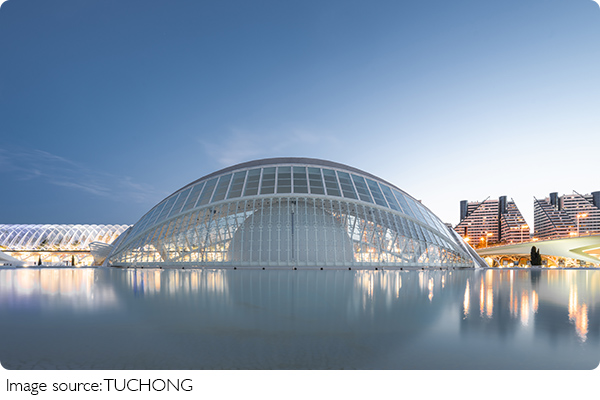Built to Influence

Have you ever stepped into a room and suddenly felt calm, alert, or overwhelmed?
The truth is, the spaces we live, work, and move through affect us far more than we realize. Architecture is not just about constructing walls and roofs—it is about shaping the way people act, think, and interact.
From hospitals that reduce stress to open-plan offices that boost or hinder productivity, architecture silently nudges our behavior every day.
The Psychology of Space
Architectural psychology studies how people perceive and behave in physical environments. For instance, high ceilings are often associated with creative thinking, while lower ceilings can foster concentration. Light, color, acoustics, and material textures all subtly influence how we feel and act in a space.
Bright natural light can boost mood and energy, while dim or artificial lighting may cause fatigue or even irritability.
Open Spaces vs. Closed Rooms
The debate over open-plan offices versus closed rooms is a classic example of how architecture can influence work behavior. Open offices encourage interaction and collaboration but can also lead to distractions and lack of privacy. On the other hand, cubicles or enclosed rooms promote focus but might hinder communication.
In educational settings, schools with flexible classroom layouts have shown higher student engagement. Movable furniture, varied seating, and break-out zones allow students to learn in ways that suit their personal styles, thus improving overall performance.
Architecture and Movement
Buildings guide how people move—sometimes consciously, often unconsciously. A wide staircase invites climbing; a narrow corridor discourages loitering. Architects use spatial cues to shape paths of movement and create rhythm within the environment.
In shopping malls, layouts are often designed in loops, encouraging people to circulate and spend more time browsing.
Hospitals are another case where layout matters. Studies have shown that patients recover faster in spaces that are easy to navigate and that include access to natural views. Wayfinding and spatial orientation in healthcare architecture can significantly reduce anxiety in both patients and visitors.
Social Interaction and Public Space
Public architecture—parks, plazas, libraries, and transportation hubs—affects how communities interact. A well-designed plaza with seating, trees, and visibility encourages people to linger and connect with one another. Conversely, sterile or poorly lit areas may lead to avoidance.
Urban planners often use design to promote inclusivity and safety. For example, placing benches near playgrounds allows caregivers to rest while supervising children, fostering both social bonding and security. Such design elements are small but essential in shaping communal behavior.
Architecture and Emotional Well-Being
Spaces that evoke comfort and beauty can positively affect emotional well-being. For instance, homes designed with natural light, warm materials, and flow between rooms are more likely to support mental health.
According to environmental psychologist Dr. Sally Augustin, spaces that balance stimulation and serenity help reduce stress and increase emotional stability.
Even institutional buildings such as prisons, hospitals, and government centers are beginning to integrate principles of calming architecture. Design is no longer just functional—it's therapeutic.
Color, Texture, and Sound
Interior finishes such as color schemes and materials play a significant role. Blue and green hues tend to calm the nervous system, while bright reds and oranges can stimulate alertness. Acoustic design also matters—spaces with poor sound control can cause discomfort, especially in learning or healing environments.
Texture affects tactile experience and visual comfort. Smooth, reflective surfaces might appear modern but could feel cold or impersonal. Meanwhile, wood, fabrics, and stone often offer a sense of warmth and approachability.
Architecture for the Future
Smart buildings are a rising trend, using sensors to adjust lighting, temperature, and air quality based on occupancy and time of day. These adaptive environments can make workspaces more comfortable and productive. In homes, architectural design is leaning toward flexible layouts that adjust to remote work, family life, or aging in place.
Green architecture is also key to both environmental and human health. Living walls, rooftop gardens, and natural ventilation not only reduce energy consumption but also improve indoor air and mood.

Examples Around the World
The High Line in New York City transformed an abandoned railway into a dynamic public park, changing how people interact with urban space. In contrast, the layout of Brasília, Brazil's capital, has been criticized for limiting walkability and casual social encounters, demonstrating how urban planning can either foster or limit community engagement.
In Japan, the concept of "Ma"—the space between objects—reflects a deep understanding of how spatial emptiness can guide thought and interaction. This cultural approach to architecture quietly influences behavior by emphasizing balance and mindfulness.
Conclusion: How Does Your Space Shape You?
Take a moment to reflect on your surroundings. How does your bedroom make you feel? Does your office energize or exhaust you? Architecture is more than buildings; it's a silent partner in how we live, work, and relate to others.
If we become more conscious of how spaces affect us, we can advocate for better design in our schools, cities, and homes. Next time you step into a new space, ask yourself: What is this place encouraging me to do—or feel? The answer may surprise you.
-
 Public Art SpeaksHow Sculpture in Public Spaces Becomes a Powerful Social Statement That Shapes Cities and Conversations!
Public Art SpeaksHow Sculpture in Public Spaces Becomes a Powerful Social Statement That Shapes Cities and Conversations! -
 Dance & ConfidenceHow Dance Empowers Self-Esteem and Builds Lasting Confidence in People of All Ages and Backgrounds?
Dance & ConfidenceHow Dance Empowers Self-Esteem and Builds Lasting Confidence in People of All Ages and Backgrounds? -
 Self-Portrait JourneyExploring the fascinating evolution of self-portraits throughout history and how artists have redefined self-expression.
Self-Portrait JourneyExploring the fascinating evolution of self-portraits throughout history and how artists have redefined self-expression.